See Wildlife and Abandoned Islands on an NYC River Cruise
Sail past a seal hangout and keep your eyes peeled for migrating birds as you sail past historic bridges, abandoned islands, and iconic NYC sites!


This guide is by Untapped Cities tour guide, Mandy Edgecombe, a National Park Ranger and resident of Jersey City.
Jersey City has been the recipient of quite a bit of hype in recent years. Referred to by some as the “6th borough,” Jersey City won Curbed’s neighborhood of the year award in 2016 and was recently voted the most culturally diverse city in the United States by WalletHub. These modern elements are easy to see when you walk its streets and traverse its neighborhoods, but the city is also home to a rich historical past.
Jersey City’s history can be traced back to as early as 1630, to the beginnings of Dutch New Netherlands. In 1781, it became the site of the Revolutionary War battle at Paulus Hook and by the late 19th century, immigrants started arriving at Ellis Island (with peak arrival in 1910), taking trains to all points west from the Central Railroad of New Jersey terminal building (recently restored) at what is now Liberty State Park. Today, Jersey City has entered a new renaissance: residential towers are being built, historic homes and structures are being landmarked and restored, and small businesses are booming. The fully public waterfront access also has some of the best views of Manhattan.
Here are 20 must-visit places in Jersey City:
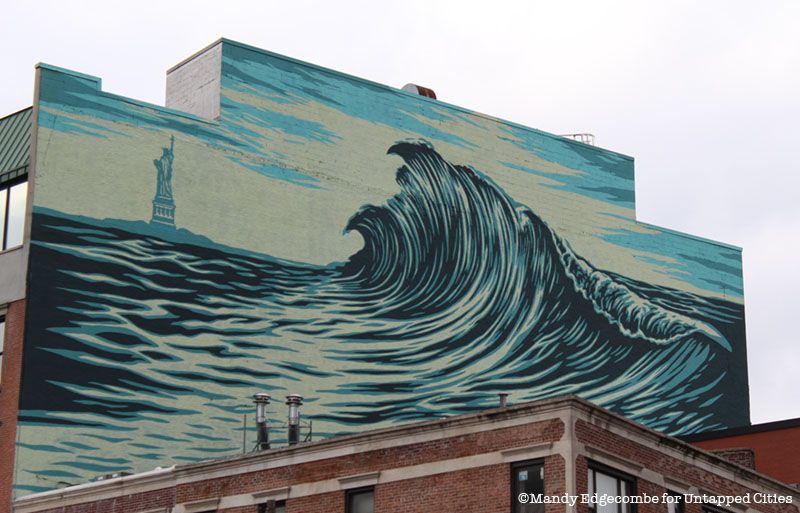
Art by Shepard Fairey
A current city initiative under Mayor Stephen Fulop’s administration is the Jersey City Mural Arts Program. Controlled by the Department of Public Works and funded by the Clean Communities grant, the program was launched in 2013 and is currently led by Brooke Hansson. It was launched not only to beautify neighborhoods and promote personal connection to the city, but also to mitigate graffiti, which the initiative has done very successfully. Over 90 murals have been placed in Jersey City to date by local and international artists, including Pixel Pancho and Shepard Fairey.
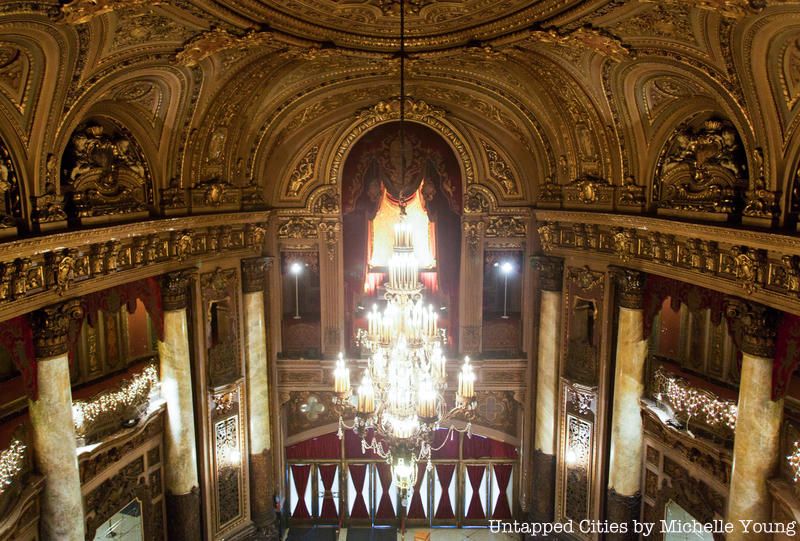
The Jersey Loews theater is a gilded and opulent late 1920s movie theater — one of five Wonder theaters Loews built in 1929-30 in the New York City metro region. The non-for-profit, all volunteer arts and entertainment organization that maintains this space encourages local talent and educational events. Catch films and well-known musical acts here, all of which help support further restoration of the theater. For a full list of events for 2017, visit their website.
Location: Directly across from Journal Square Path Station on John F. Kennedy Blvd.
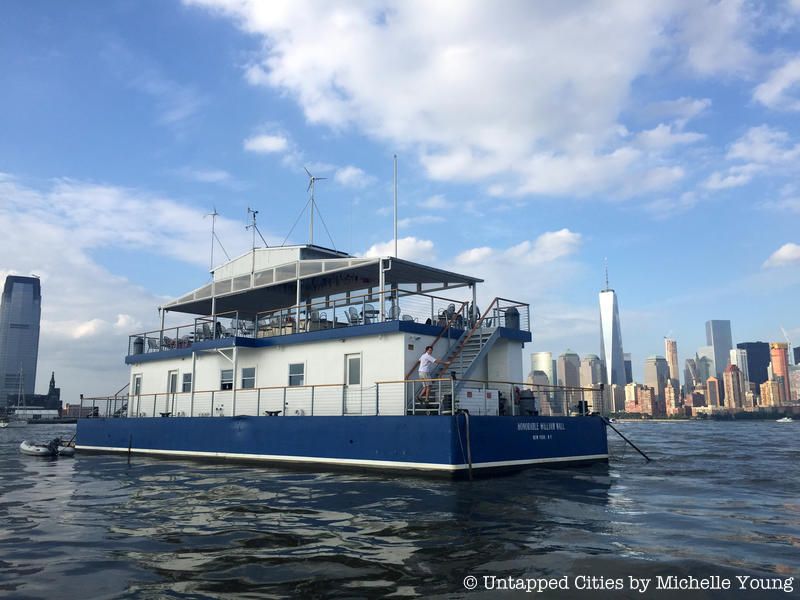
The Honorable William Wall Bar is the Manhattan Yacht Club’s floating clubhouse. Situated between Liberty State Park’s terminal building and Ellis Island, the bar is accessible from the shores of Jersey City or Manhattan. While aboard, you’ll find sailboats and commuter ferries passing by as you sip on cocktails.
From Jersey City, you can reach the bar via the Admiral’s Launch vessel, which is situated at Surf City restaurant and bar at 1 Marin Blvd (walk to the floating dock). Boats leave Jersey City every half hour from 5:30 to 8:30 (see the 2017 schedule for days and dates); tickets should be reserved ahead of time on its website. From Manhattan, take the Liberty Landing ferry, which departs from the WTC ferry terminal at the end of Vesey Street on the Little Lady ferry.
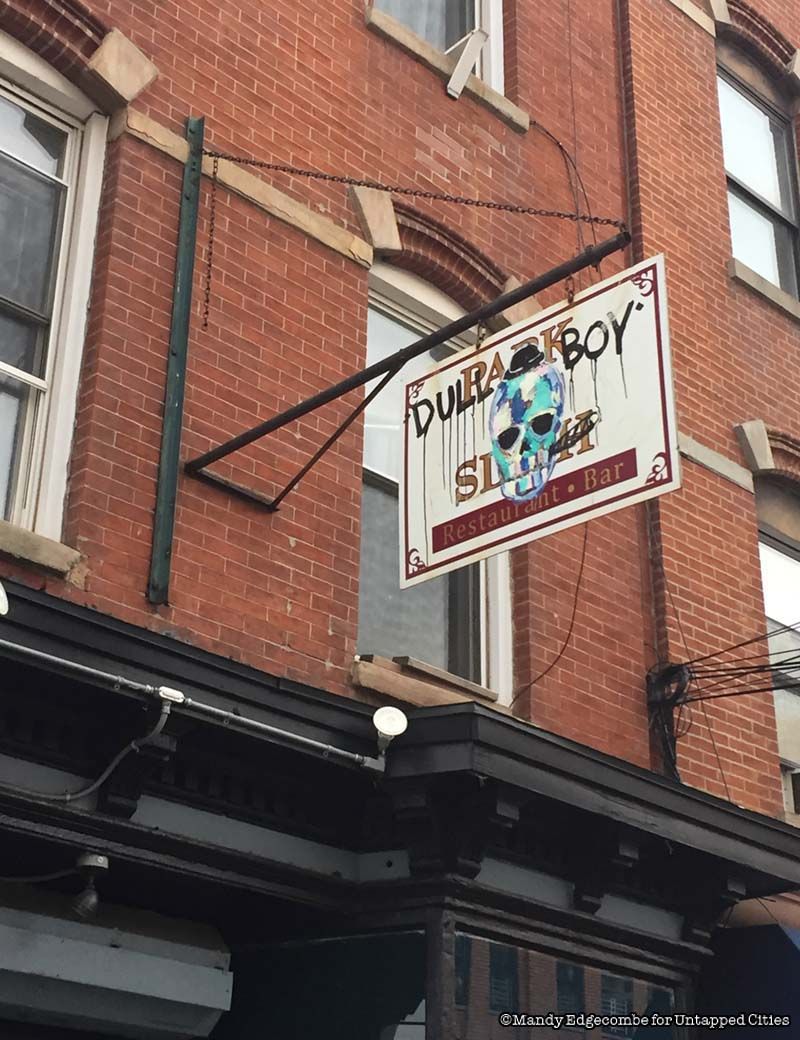
Located on Grove Street, Dull Boy bar offers a diverse cocktail menu that appeals to all types of palates. In addition to classic drinks, it serves creative cocktails, created by Dull Boy’s team of mixologists. Try the Rosieoak and the Catherine from the contemporary menu.
Because the bar doesn’t get terribly packed, it’s a great place for a night cap. Make sure to also stop by for its amazing dinner menu, which is served Wednesday through Saturday (notice how the bar upcycled the sign from the previous business).
Location: Located at 364 Grove St., near Grove St. Path station.
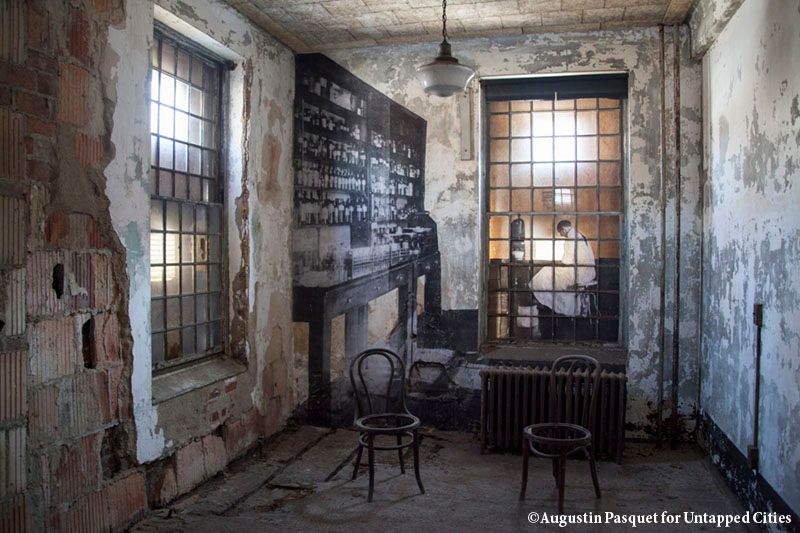
Ellis Island was the United States government’s premiere immigration inspection station between 1892-1954, during America’s open door policy regarding immigration. A little known fact: not only can you access Ellis Island and the Statue of Liberty from Jersey City, over half of Ellis Island is actually in Jersey City as well.
In a landmark Supreme Court case in May 1998, it was decided that Liberty Island and the original part of Ellis Island belonged to New York. The tear drop shape footprint of the natural island prior to extension is directly underneath where the museum stands today. The Island was enlarged before the first immigration station was built (which isn’t the one standing today), then again in 1902 for the first portion of the immigrant hospital, and in 1909 for the second. Any new land created in those waters belonged to New Jersey, a decision confirmed in 1998.
While most are familiar with the main immigration museum on Ellis Island, the abandoned hospitals on the southside of the island is a must-visit. Docents of the non-profit foundation Save Ellis Island run tours of the abandoned hospital in partnership with Untapped Cities for a truly behind-the-scenes tour with access to places not normally seen by the general public. See our schedule for tour dates offered. To access the Islands, visitors must board the ferries leaving from Liberty State Park in New Jersey, and Battery Park in New York City.
Behind-the-Scenes Hard Hat Tour of the Abandoned Ellis Island Hospital
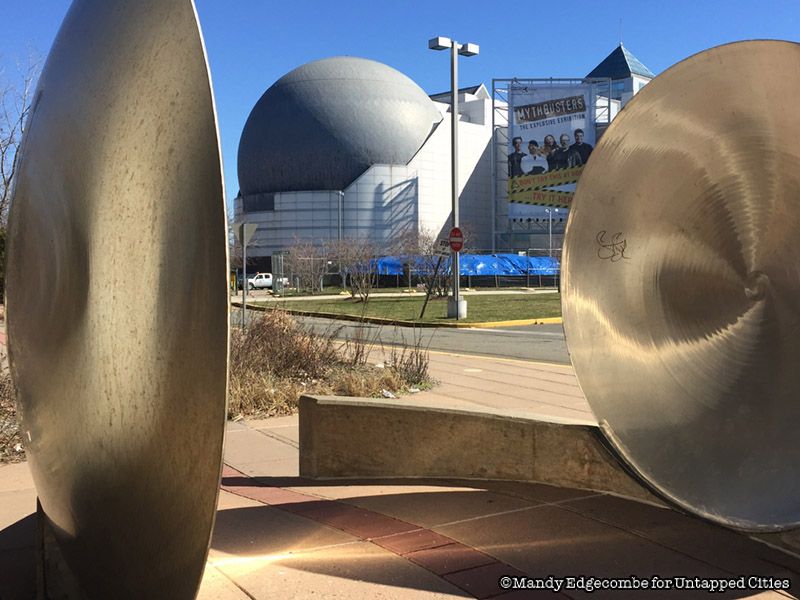
The Liberty Science Center is a private and state funded interactive children’s science museum in Jersey City. It provides a universal, global and local perspective on science, technology and engineering, and is home to the largest IMAX dome in the country. In addition, the museum has exhibits focused on skyscrapers because of its proximity to large cities, as well as an entire estuary lab about Hudson River’s ecology.
The Liberty Science Center is expanding in the next several years to include “Sci Tech City,” a science-focused public high school, which will offer rental space for science or tech start ups; it will also partner with Liberty State Park to promote and conduct nature education on site.
Location: Located at the Liberty State Park light rail stop or via the New Jersey Turnpike. Take the 33rd Street Path train to Newport station, walk across street to the Hudson-Bergen light rail towards West Side Ave.

Choc-O-Pain Boulangerie and Cafe offers traditionally baked bread and viennoiseries (classic French breakfast pastries); it’s one of the few places outside of France where you can find a (Petit) “Kouign Amann,” a kind of inside out stuffed croissant, cooked twice and covered in a caramelized sugar crust. The chocolate flavor is what the cafe is known for, but it also sells apple and seasonal options. In addition, you can find sandwiches, quiches and soups on the menu.
Location: Choc-O-Pain has a location in Hoboken, and one is coming to Jersey City Heights very soon. To find it, take the Path to Grove Street station; walk 4 blocks west to 530 Jersey Ave.
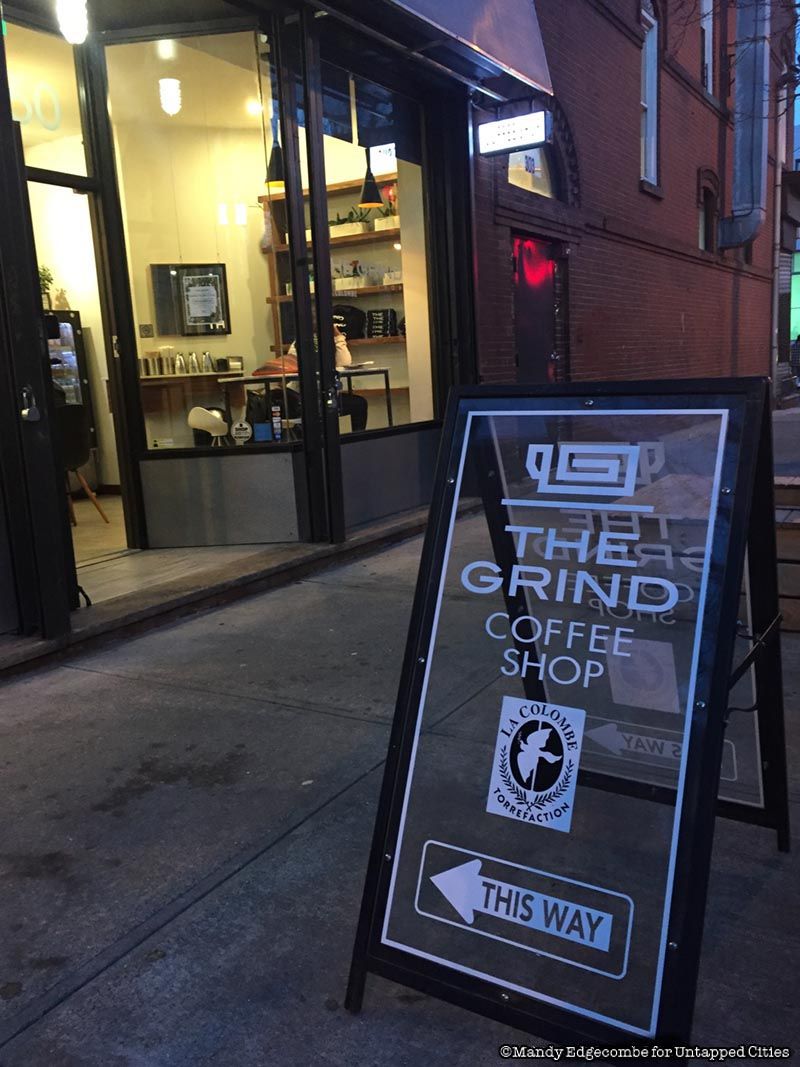
The Grind is a warm and inviting coffee shop with an urban, clean design and delicious menu. It’s a welcome addition to the Communipaw neighborhood that already has a vibrant arts studio and family oriented community. The coffee shop has a fantastic chai tea latte; for an extra kick, get it dirty (with a shot of espresso).
Location: 360 Communipaw Ave. By public transit, it’s best reached from the Liberty State Park light rail stop. From New York City, take the 33rd Street Path train to Newport station, and walk across street to the Hudson-Bergen light rail towards West Side Ave.
In Jersey City, abandoned explorers have their fun on a mile-long railroad line that once connected the Erie Railroad’s main line to the Pavonia Terminal on the Hudson River (now demolished); from there, travelers would connect to a ferry to Manhattan or transfer to the Hudson and Manhattan Railroad. The project’s construction in the early 20th century was an expensive engineering feat, but trains stopped running here by 1957. The adjacent Long Dock Tunnel is still in use for freight.
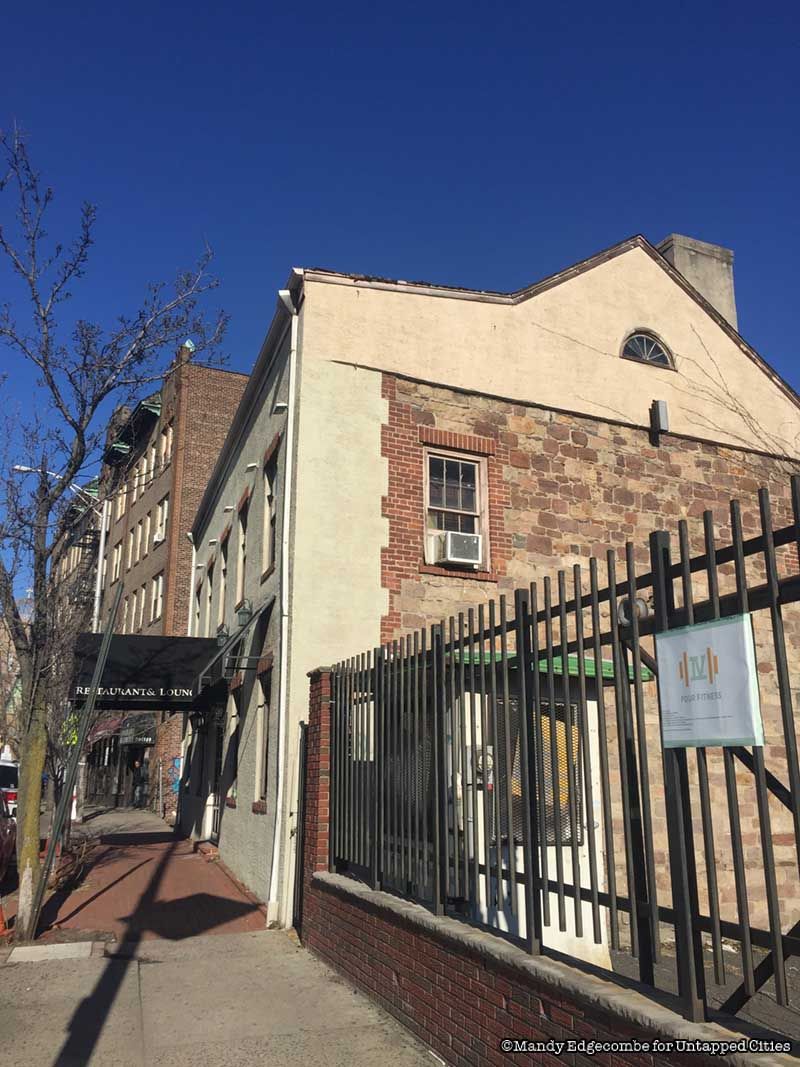
The Summit/Newkirk house in Jersey City is one of the oldest homes in America. Built around 1690, it sits atop a ridge of bedrock that goes through Jersey City called the Palisade Sill. The originally one-story building was discovered in 1979 during a renovation. Today, it stands a good example of a seventeenth century Dutch colonial, made from sandstone, brick and clapboard with a gabled roof. Eight inch wooden pegs, rather than nails, were used in the timber beams in the basement (the Wyckoff house in Brooklyn used similar wood pegs for its construction).
The land—in the township of Bergen, and later consolidated into what is Jersey City today—was granted to John Berry from Barbados and sold to Mattheus Cornelisson Newkirk in the 1670s or 80s. It was owned by the Newkirk family for about 200 years before they sold the property in 1889. Following that, it served as an orphanage until 1928, and in the past century, it has housed different retail businesses.
It is currently vacant and looks abandoned, but feel free to walk around the property as it’s surrounded by public parking lots. Sanai, a restaurant that once occupied the building, closed down in 2014. Since 2005, it’s been owned by retired NBA player and Jersey City native Terry Dehere. A new business may arrive soon, given the construction of the nearby 53-story residential tower, Journal Squared, and the revitalization of Journal Square itself with a new pedestrian friendly plaza.
Location: Take the Path train from New York City to Journal Square, walk east on Sip Ave to Summit Ave and go left. Located at 510 Summit Ave.

The Van Wagenen/Apple tree house is one of the oldest houses in Jersey City. Built in the 1740s, the site was supposedly a legendary meeting place for General George Washington and Major General Marquis de Lafayette, who dined and discussed strategy under an apple tree during the Revolutionary War between August 24th and 26th, 1780. According to correspondences, the two were in Bergen at this time, but no mention is made of a meal or a tree. This local legend has been passed down but not proven.
The actual site dates back to the 1600s, when it was part of the Dutch settlement of Bergen, originally established by the Dutch West India Company. After the English took over New Amsterdam, English Governor Philip Carteret granted land to the Dutch left living in the Bergen area. The land surrounding the house was granted to Gerrit Gerritsen in 1688; some time after, he changed his family name to Van Wagenen to reflect where he was from (the town of Wagening in Holland). The Van Wagenen family owned the house for 259 years. Its other name—the Apple Tree house—drives from the presence of an apple tree orchard and cider press on the property.
The rectangular Dutch colonial house, originally a one-store room farmhouse, was built in two sections over four phases of construction and consists of locally cut sandstone. One apple tree was left on the property and cherished by locals because of its connection to Washington, but it came down due to a storm in September 1821. When Major General Lafayette came back to New York for a visit, he was presented with a cane made from the wood of the apple tree. That cane is now on permanent display at the Louvre museum in Paris.
The building was landmarked by the National and State Register of Historic Places in 2006; it’s fully restored and owned by the city, but there’s no public access at this time. The restoration process took 11 years, 5 administrations, and approximately 3 million dollars to complete. Keep your eyes peeled for an original gaslight street lamp on the property next door – it’s one of the only ones left in the city.
Location: When traveling from New York City take the World Trade Center or 33rd St. Path train to Journal Square. Located on 298 Academy Street, just a few blocks southwest from train station.
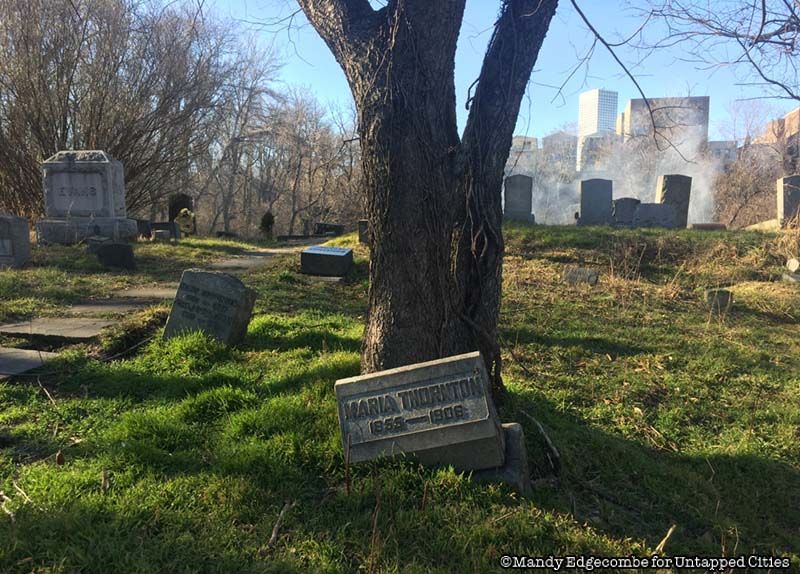
The historic Jersey City and Harismus Cemetery contains a literal treasure trove of American history. It was the site of Revolutionary war skirmishes and holds a munitions bunker from the War of 1812 (leftover boxes of munitions are still there today). Military usage of the grounds occurred up until World War II, and many artifacts have been found since then.
Incorporated in 1831, it’s one of the very first landscaped garden-style graveyards, pre-dating Greenwood cemetery in Brooklyn. It contains an unmarked infant burial ground from a cholera epidemic, the remains of a Viennese Count and the remains of hundreds of soldiers from the Revolutionary War, the War of 1812, the Civil War, the Spanish-American War, World War I and World War II. There are tunnels and crypts that one can access via tours from one of the keepers of the cemetery who lives on the property.
You can make arrangements for tours, but they will take walk ups during normal hours of operation as long as you have a small group. These tunnels were even used for transport as part of the Underground Railroad. Officially abandoned in 2007, it was eventually saved by Ellen Markenstein and a team of restoration volunteers who care for the property today.
Location: Take the Path train to Grove St. Located at 435 Newark Ave.
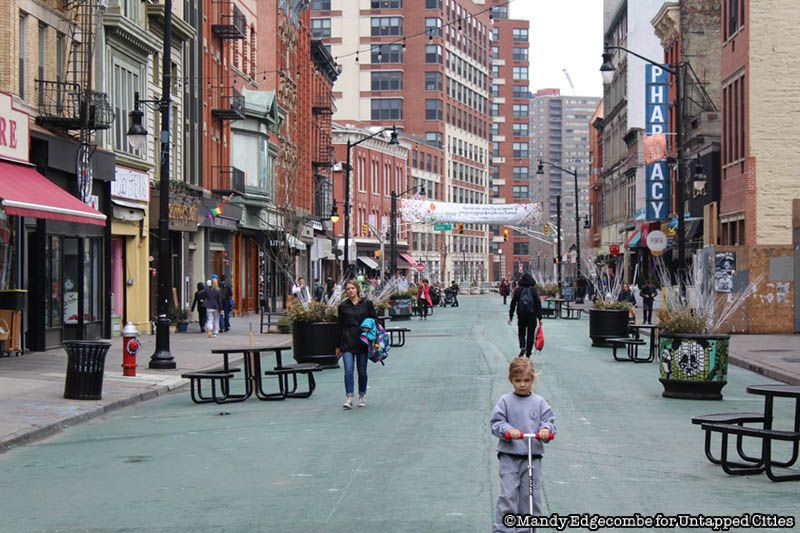
A portion of Newark Avenue between Grove and Barrow has been closed off to automobile traffic since 2014, when it was turned into a pedestrian plaza by the Fulop administration. Since then, it has truly become a community gathering place, transforming this historic downtown area in the process. There are plenty of tables and restaurants on the avenue, as well as shops like Morlee’s shoe store, which carries brands such as Hunter, Sorel, and Vans.
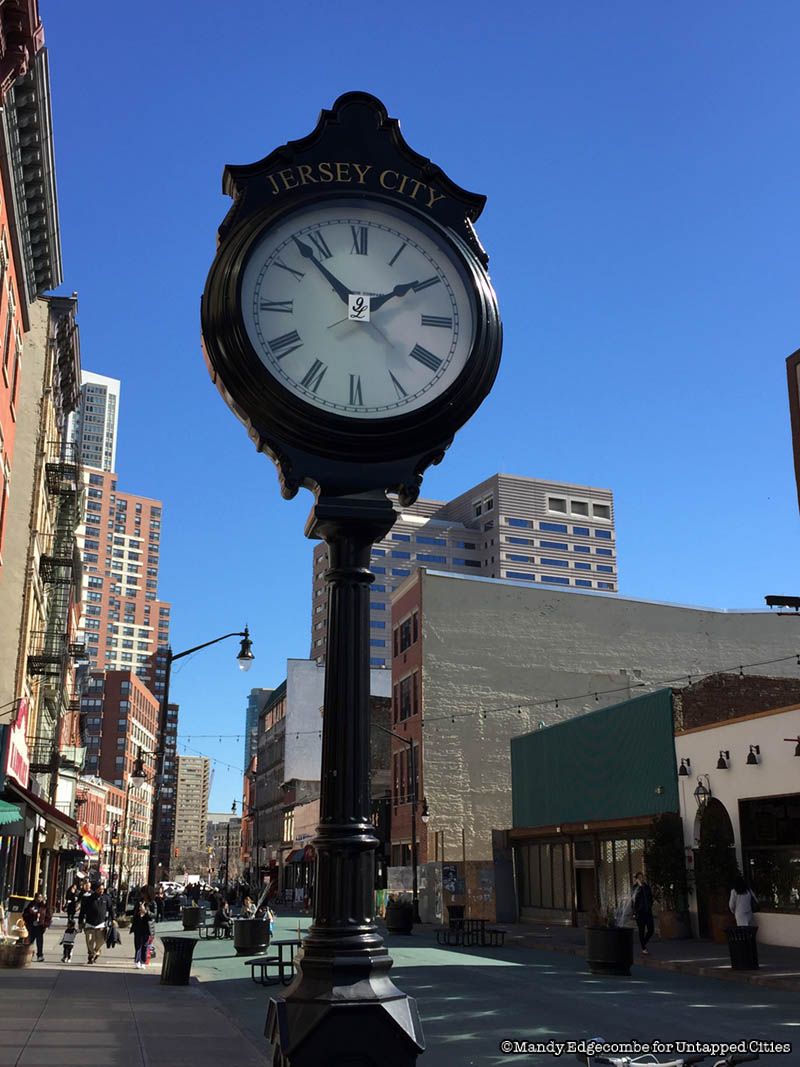
It’s common to see children riding on scooters, dogs being walked and couples meeting after work at Newark Ave. At 11pm, some of the places turn into night club venues with DJ’s playing live music. Check out Porta for late night drinks and a traditional Naples style wood fire oven pizza. With more establishments in the works, Newark Ave. is quickly becoming “restaurant row,” and almost anything the heart desires gastronomically can be found here.
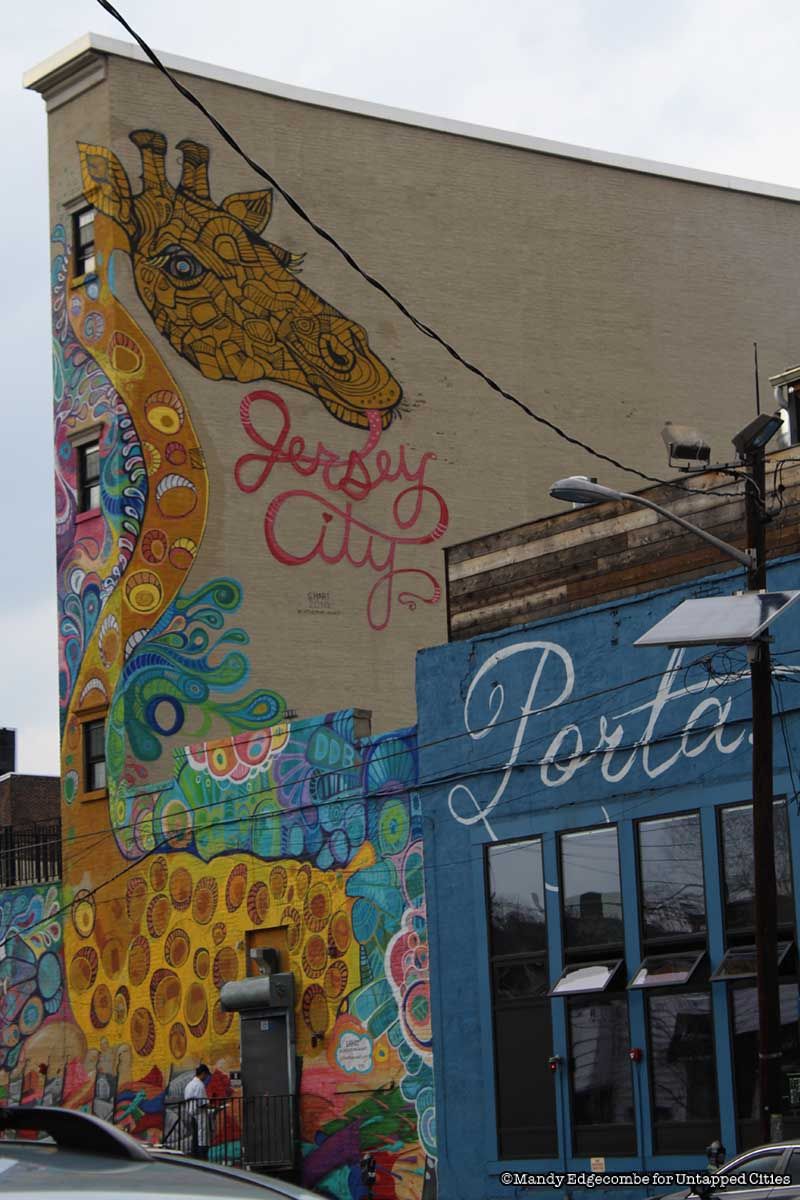
Art by Catherine Hart
Grove Street Path station plaza is at the head of the public promenade on Newark Ave. and there is usually some event happening: local bands playing music, a farmer’s market, or an arts festival going on in the summer and fall. The Artist and Maker Market has been a big hit in the historic downtown neighborhood since its inception in 2015. The open air baazar offers a place for micro-entrepreneurs to sell and show off their creations directly to the community. Modern consumers can have peace of mind that they are also buying locally made and/or sourced product from the actual makers.
The Market runs in conjunction with the Groove on Grove series of local artists performing live music. Starting May 3rd, they run most first and third Wednesdays of the month until September. See their website for a full schedule of events. The Historic Downtown farmers market offers a wide array of produce from local farms, prepared foods and goods from local businesses. It operates from May to December on Mondays and Thursdays (4-8pm). Located at Grove Path Station plaza.
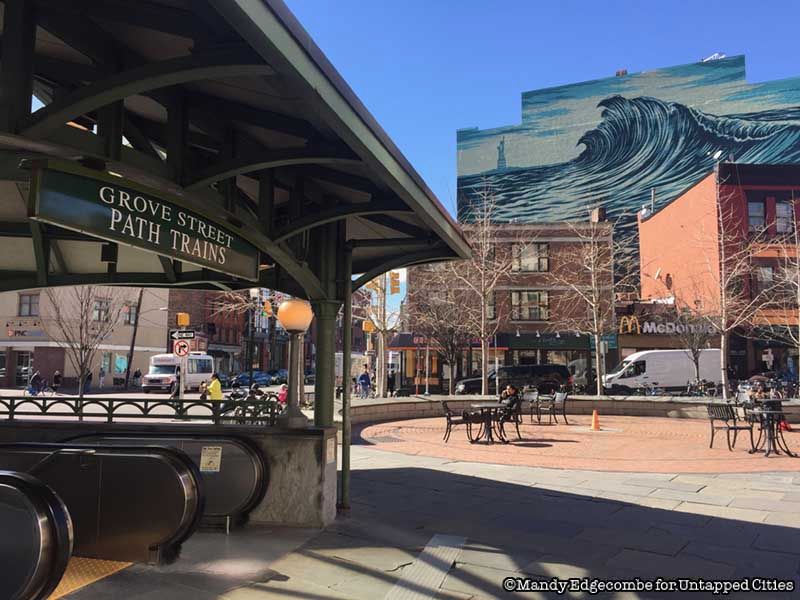
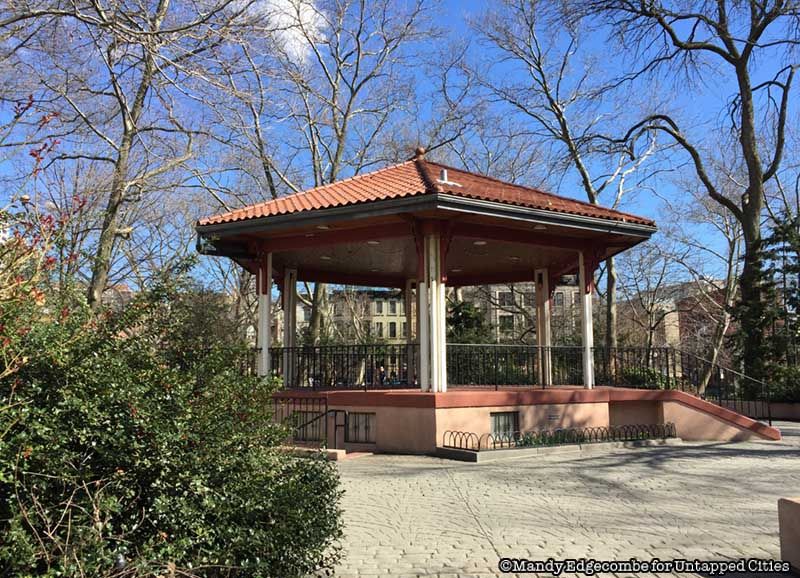
Van Vorst Park was originally a 1.8 acre parcel of land given by Cornelius Van Vorst in 1835, and officially landscaped in 1851. Brownstone construction started soon after and some of the best examples of them surround the park. At the time, it was the center of what was then the Van Vorst township, later annexed by Jersey City. It was left to decay by the mid- late 20th century because people were leaving cities for habitation in suburbs en masse. By the 1970s, it looked like an abandoned lot.
Home owners of the neighborhood and volunteers restored the park according to the original 1851 plan in 1999, and it’s currently taken care of by the Friends of Van Vorst Park. The name comes from Cornelius Van Vorst, an original citizen of Dutch New Netherland who held land under the patronship system. The park is a lovely oasis with playgrounds for children, two dog parks for large and small breeds, and a beautifully restored gazebo where you can find dancers practicing moves to actors rehearsing a play. There are often family style movies shown in the summer, so come here with some carry out from one of the many places on Grove Street for a quick outdoor picnic. One of Jersey City’s many Farmers Markets operates here on Saturdays from 8am-3pm, April 23rd through December 17th.
Near Grove St. Path station. Just a few block walk south. On Montgomery and York Streets, between Jersey Ave and Barrow St.

Liberty State Park owes its existence to a man named Morris Pesin, who once embarked on a canoe trip the Statue of Liberty. He couldn’t understand why people coming from New Jersey and locations west had to drive into Manhattan via the Holland Tunnel and take a boat from Battery Park when Liberty Island is actually closer to New Jersey. So Morris took a reporter, a camera and a canoe on a trip to Liberty Island, and a some years later—with a lot of grassroots effort—Liberty State Park was born.
The Friends of Liberty State Park, who help fundraise and maintain the park, is currently run by his son, Sam Pesin. When Morris first took his trip, the land that is now Liberty State Park contained abandoned railways, factories and warehouses, and a crumbling terminal building of the Central Railroad of New Jersey. Several railroads terminated here and current citizens and newly arrived immigrants would take ferries to and from Manhattan or on all points west.

Goods were imported and exported as well, including munitions manufactured in New Jersey, and sent to England and France. During World War I, German spies organized and successfully blew up the munitions depot at the end of the rail line on the south end of the park at was was called Black Tom Island. Walking around at the exact location of the explosion, one can see remnants of the depot, train tracks, and a piece of buried charred wood sticking out from the shoreline.
Today, the 1200+ acre park (roughly 600 on land and 600 acres on water) is a lovely oasis with amazing views of Manhattan and tons of events happening throughout spring summer and fall. Check out their popular kayak eco-tours ($20 per person) featuring the restored and natural salt marsh and the last natural beach in Jersey City. You can also see the recently restored (2016) Railroad terminal building, where you can buy tickets to the Statue.
Take the West Side Ave light rail to Liberty State Park stop. Or if driving via the New Jersey Turnpike. It’s a mile walk through the park to the shoreline and terminal building from public transit.
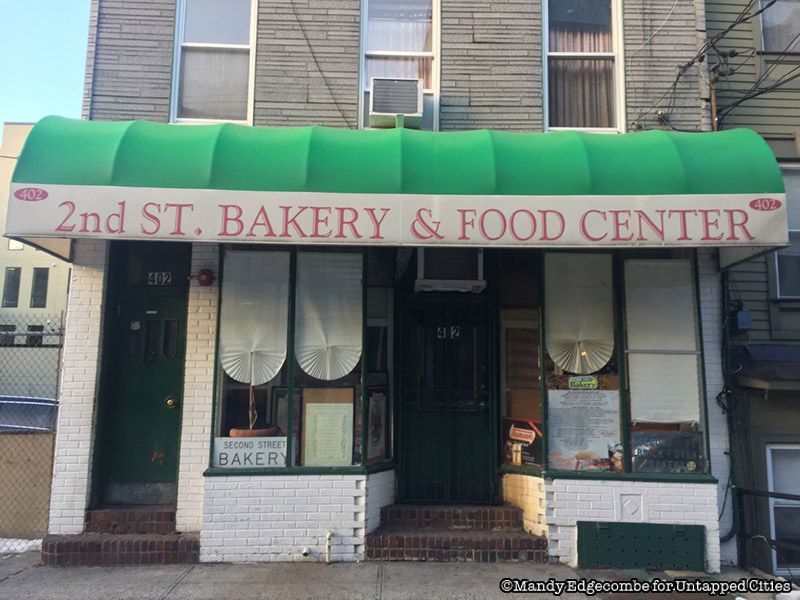
There’s usually a line out the door at Second Street Bakery; get there early because the shop runs out of product quickly. Opened in the 1920’s, Second Street Bakery still makes bread from the same coal fire oven. The bakery focuses on mostly savory baked goods and hearty hot and cold sandwiches.
Second Street Bakery is known particularly for its sausage bread, with big chunks of sausage baked right in, as well as other stuffed rolls, including broccoli and cheese, soups and antipasto. We love their eggplant parmigiana sandwich with fresh mozzarella and balsamic vinegar. The one lone sweet is a ricotta pie.
Located at 402 Second St. Take Path train to Grove St. It’s almost a mile walk but worth it to see the neighborhood along the way. To make a day of it. It’s a close walk to the Historic Harismus cemetery after lunch.

Moloney’s Meats is a family owned and operated butcher that has been in business since 1875. Walk in and you’ll feel like you’re in a neighborhood hangout. Tommy, the owner, inherited the business and still works behind the counter everyday. If not chicken cutlets, there’s always sharp wit and laughter flying around inside.
Moloney’s meats are of high quality but don’t forget to grab a box of their house-made ravioli. Another wise choice is a stack of their homemade burger patties.
Located at 627 Newark Ave. Take the Path train to Journal Square and it’s about a five block walk from there.

The Taqueria offers Oaxacan Mexican fare with decor that has a L.A. vibe. This food is characterized by fresh flavors and ingredients—not much spice and some heat. Its menu hasn’t changed much since inception; they stick to regional traditions very well. It’s exactly what you’d find on the streets of Oaxaca. The decor and music is inspired by classic rock bands from the 70s and 80s.
Taqueria suffered flooding during Superstorm Sandy and was closed for many months. When they reopened in 2013, they were able to secure a liquor license and became even busier than before. There’s often a line out the door for a table on most nights for dinner, but lunch is never terribly busy. We recommend getting fresh-made guacamole, the chicken enchiladas verdes, a sangria or tacos (the carnitas (pork) and the pescado (fish) are personal favorites). There’s plenty of yummy vegetarian options too.
Near Grove St. Path station on the corner of Grove and Grand Streets.

White Star burger Bar is a casual neighborhood burger joint in Paulus Hook, with its original location in Hamilton Park. The decor is early century industrial with a clean modern feel and friendly staff. Before entering, take a look down Warren Street for a perfect view of the Statue of Liberty. And of course, have a burger— it’s one of the best in Jersey City. Start out with the pulled pork nachos—that’s a must have, then grab one of their many specialty burgers made with Pat LaFrieda meats. It’s an old New York butcher business that’s been around for 90 years, but moved across the river to Jersey a few years ago. Other options include the bubbly bacon mac and cheese. It also has a craft cocktail menu with many modern and classic offerings including a Moscow mule and the Redhead, made with Pyrat rum, strawberry and lime soda.
Take the Path train from WTC to Exchange Place. Located a few blocks west at 179 Warren St.

Harborside Mack-Cali: This offset, 713 ft, 69 story tower called the Jersey City “Urby” is the first of three towers to be built in coming years as a part of the Harborside complex at Exchange Place directly across the River from Lower Manhattan. Designed by the Dutch firm Concrete, there’s also another Urby in Staten Island, which boasts an urban farm and beehives.
The Jersey City “Urby” has 762 units and follows the style of several new residential towers erected in the past few years in New York City, with an asymmetrical design to enhance views and space appearing as cantilevered blocks. The scheduled opening is February 2017 with rentals starting at $2,000 a month.
Located near the Exchange Place Path station at 34 Exchange Place.
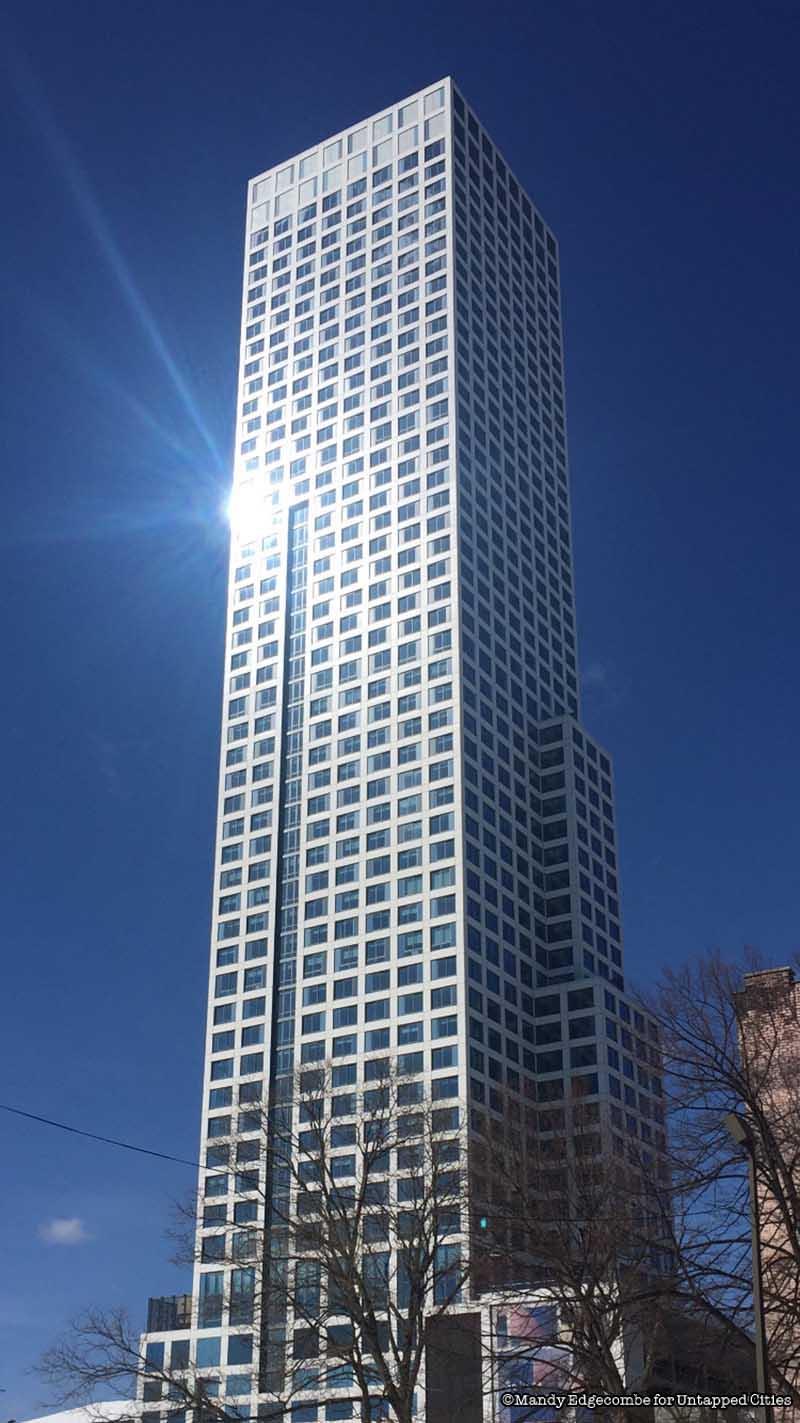
The Journal Squared tower is the first of three to be built on this site designed by Handel Architects and managed by Kushner real estate. This tower is 563 feet tall and will bring 538 apartments to downtown Jersey City. By the time the others are built as apart of the entire complex, it will provide 1,838 apartments, 36,000 square feet of retail space and a new public plaza. It boasts amenities such as an outdoor pool, sun deck, yoga, and a restaurant and lounge on the 53rd floor.
The name Journal Square comes from the Jersey (originally, the Evening Journal) Journal newspaper building which used to be on Journal Square before it was demolished. It’s still in circulation today.
Next, check out neighborhood guide to Washington Heights, NYC and NYC’s micro neighborhoods.
Subscribe to our newsletter